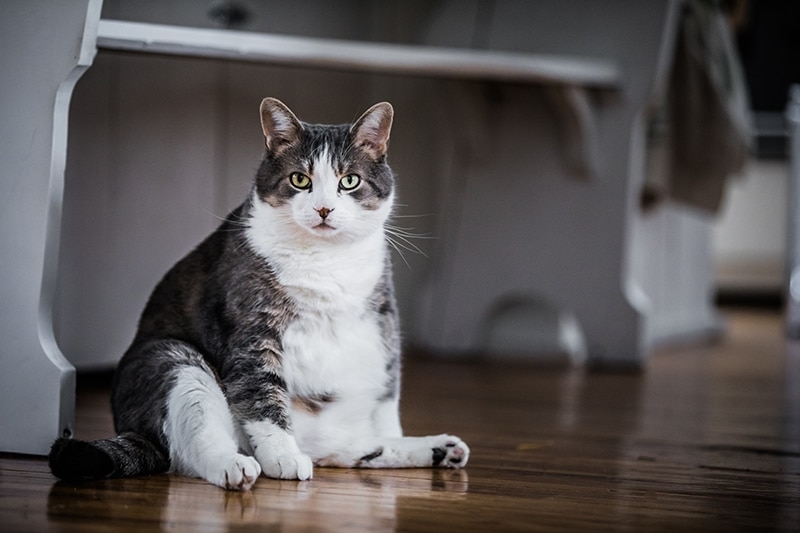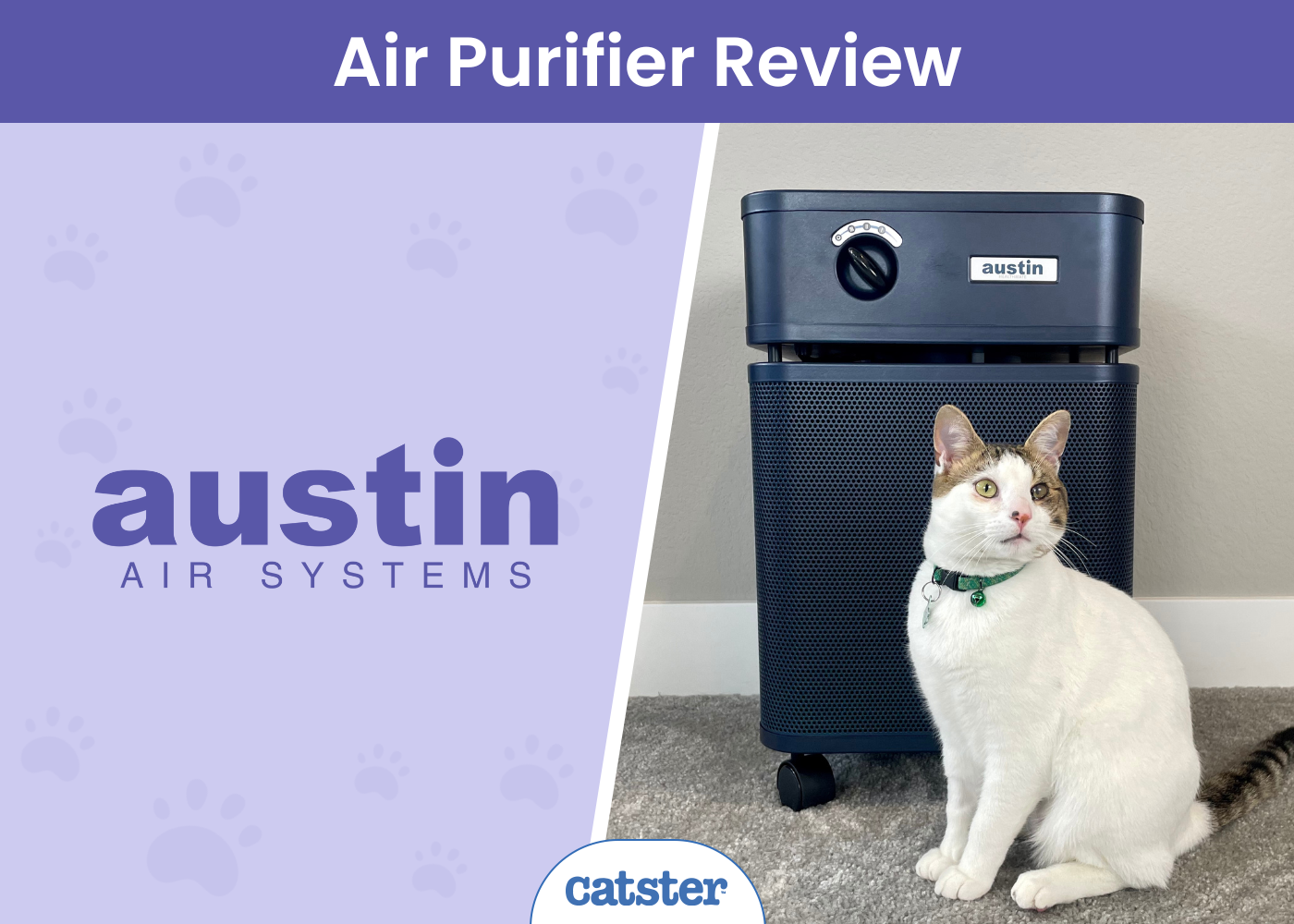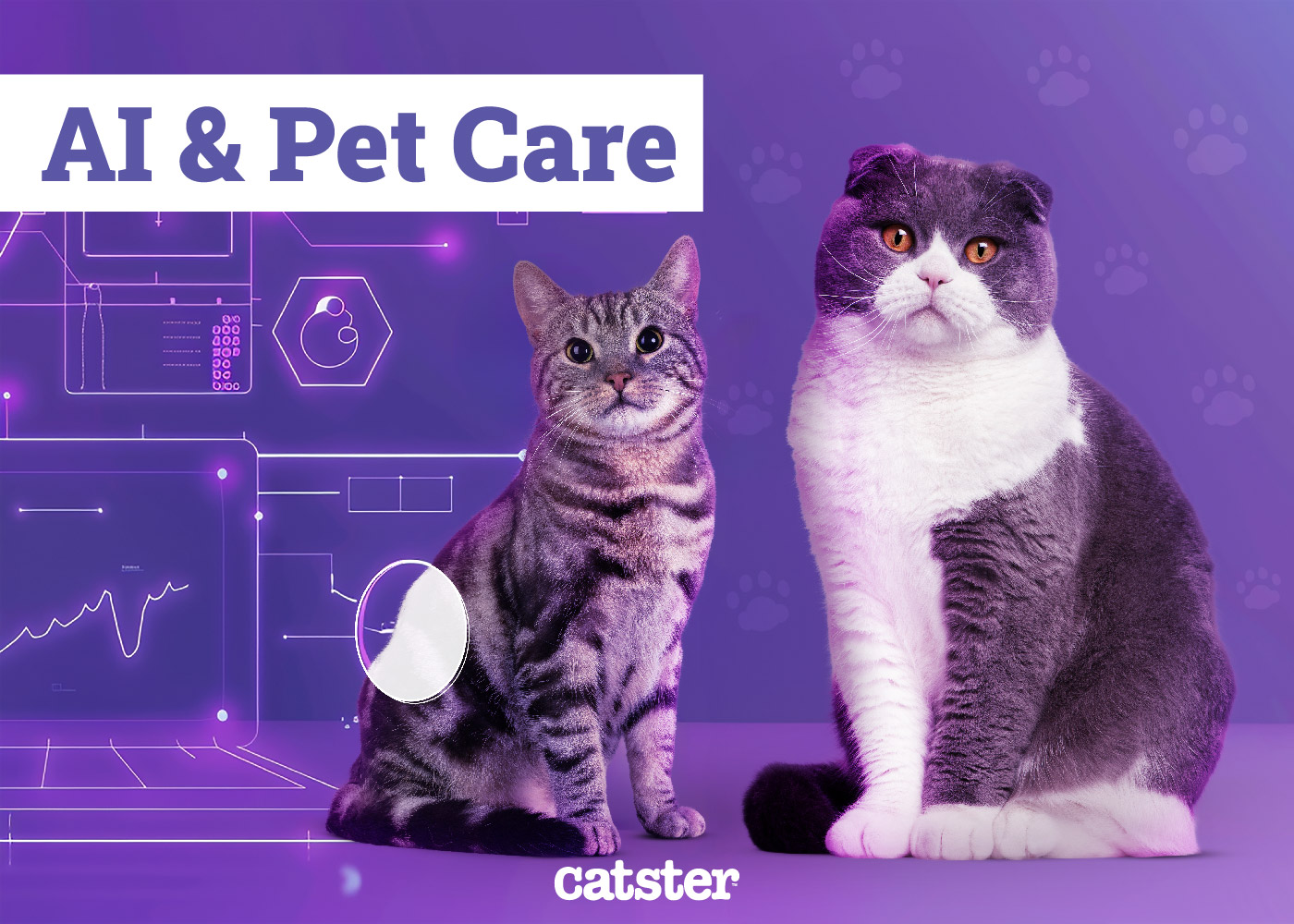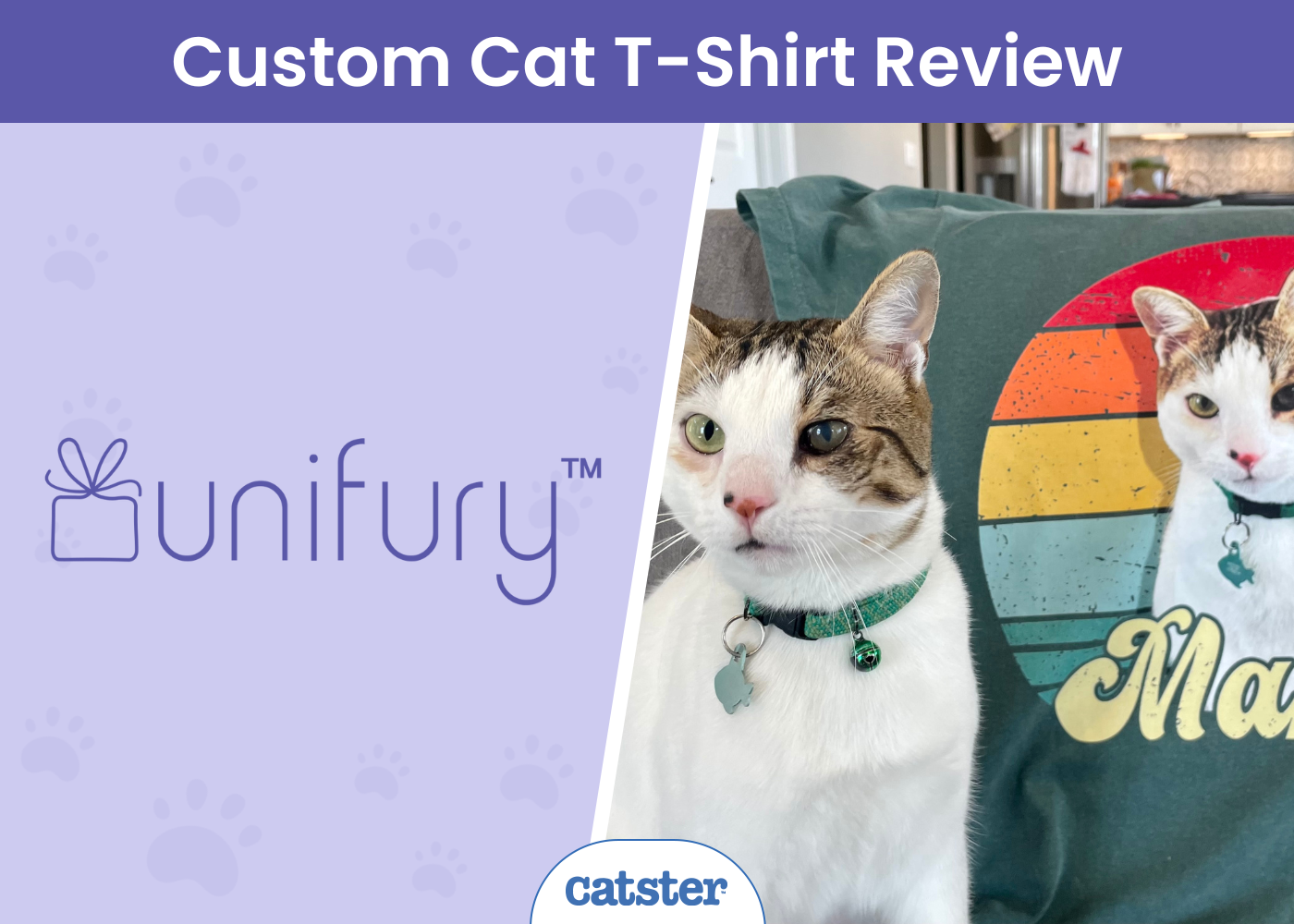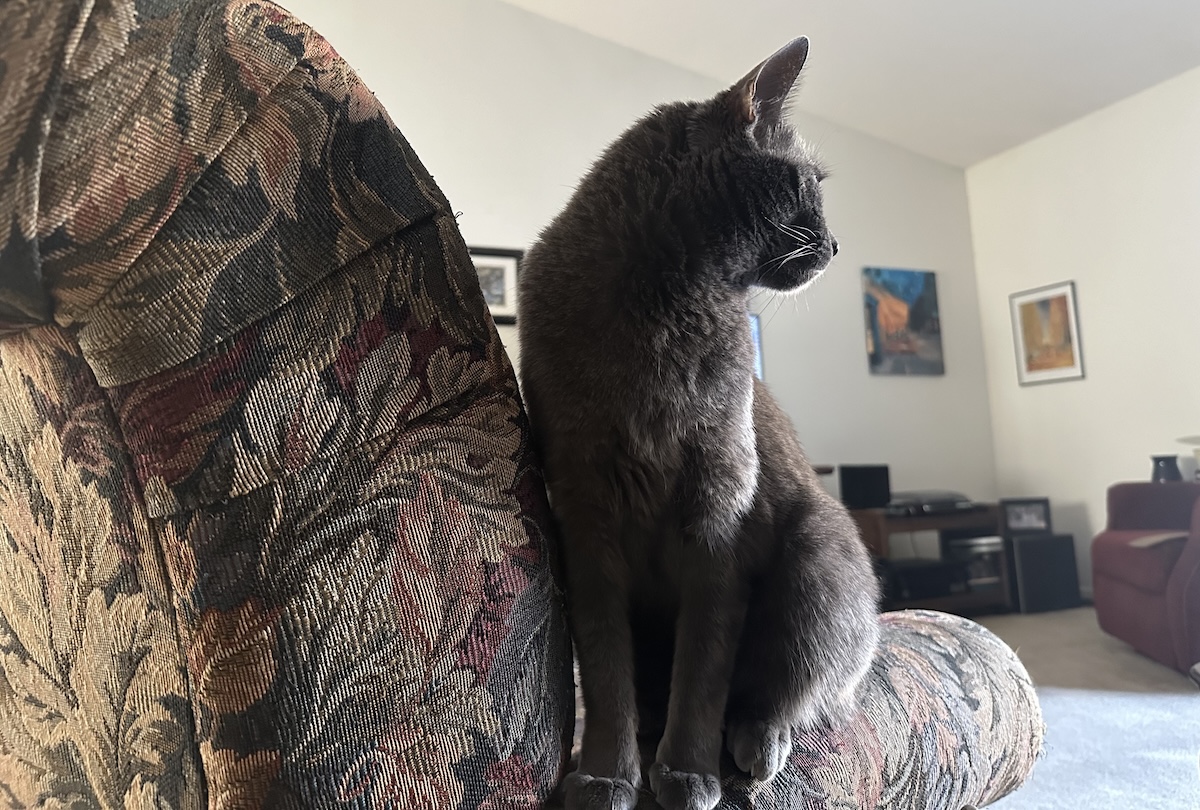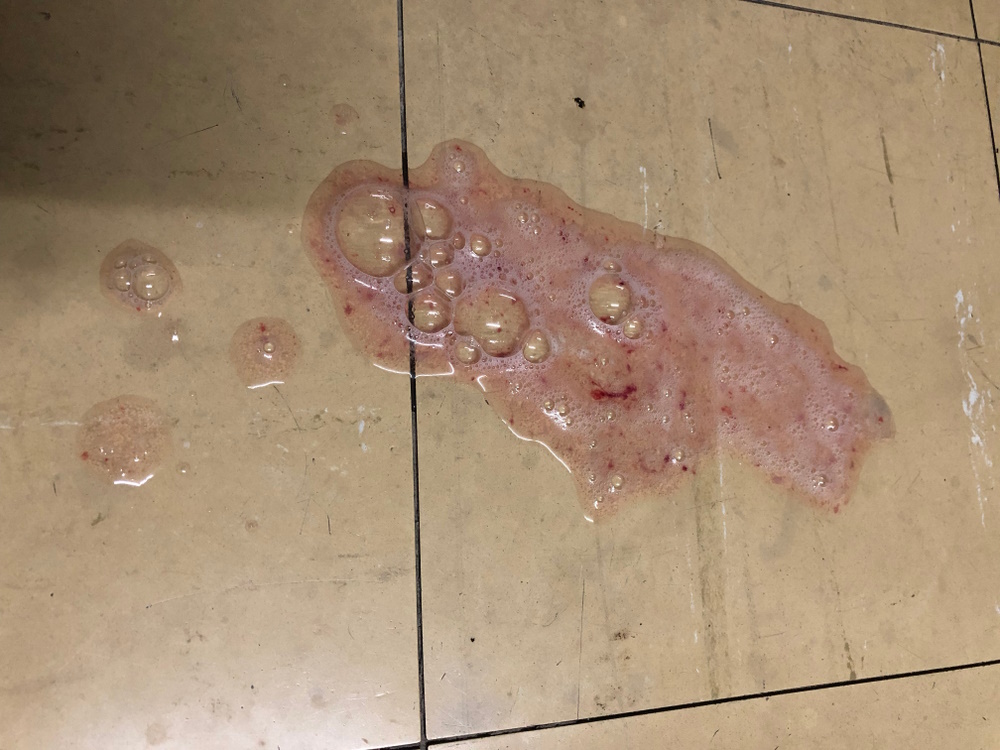Obesity is a major problem in domestic cats. Their food, which is naturally high in calories, is readily and freely available to them, compared to having to hunt and kill their food in the wild. This means that pet cats do not consume anywhere near the same number of calories as wild cats. Combined with the lack of exercise that a lot of pet cats get, this leads to pet cats being very likely to put on more weight.
Below are some interesting facts about fat cats related to feline obesity and its impact on domestic felines.
The 10 Facts About Feline Obesity
1. It’s Difficult to Determine Ideal Body Weight
The ideal body weight of a cat depends on its age, breed, and even gender. And this can vary significantly from one cat to the next. For example, a Siamese should weigh around 8 pounds, while a Maine Coon has an ideal body weight of approximately 20 pounds.
However, as most cats are mixed breeds, it can still be difficult to determine the ideal weight. In these cases, vets use a body condition score, which involves a rib check, a profile check, and an overhead check to determine whether the cat is underweight, ideal weight, or overweight.
Using these checks, the vet will be able to ascertain an ideal weight and how your cat stacks up.
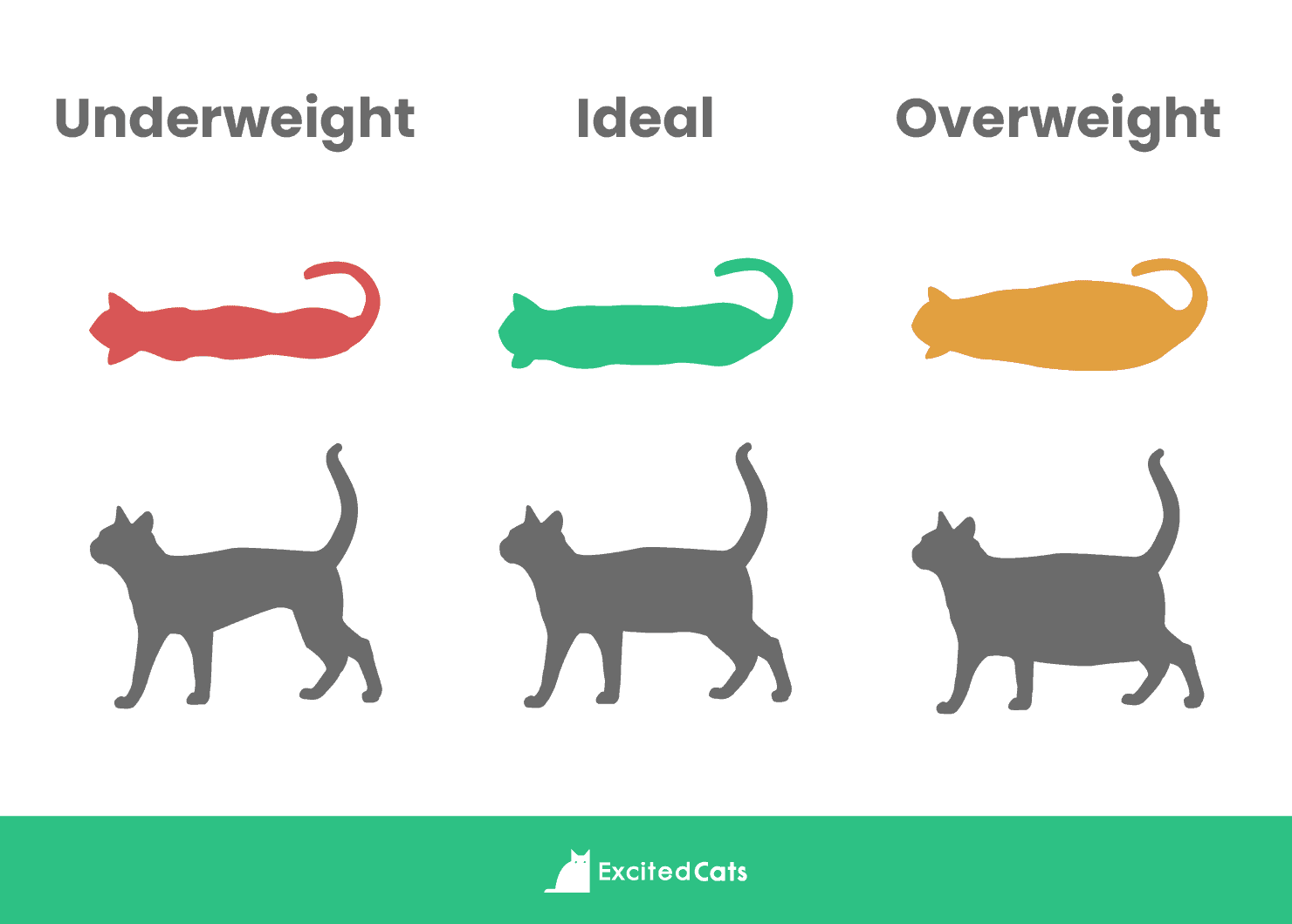
2. Cats Are Overweight When They Are 10%–20% Over Their Ideal Weight
Ideal body weight is usually given as a range and there is some room for a little extra weight before a cat is considered to be carrying too many pounds. Once your feline friend is 10% over its ideal body weight, though, it is considered overweight. This is the time to take action, increase exercise, or reduce calorie intake to get your pet down to a more ideal weight.
3. Cats Are Obese When 20% Over Their Ideal Weight
Once a cat reaches 20% or more over its body weight, it is considered obese1. At this point, there is even greater stress and strain on the joints as well as on organs and the body itself. It will be harder for your cat to lose weight when obese, not only because it needs to lose more weight but because it is likely to find exercise harder and because you will likely need to put it on a more restrictive diet.
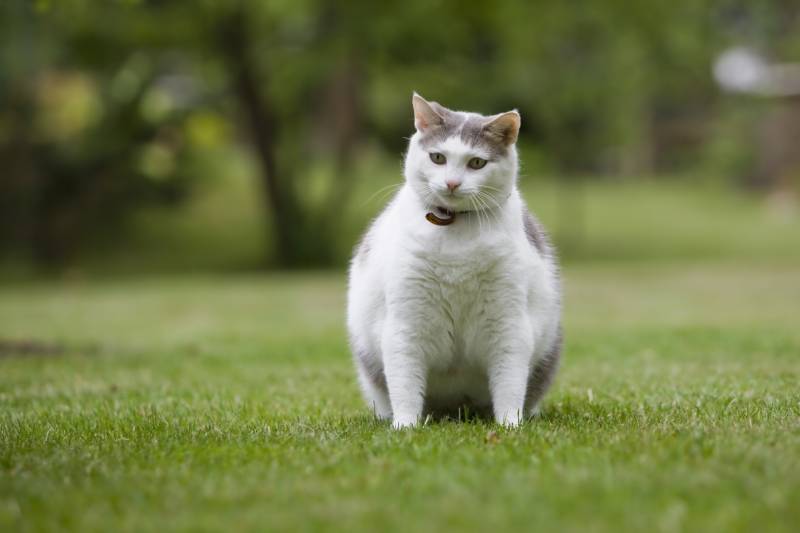
4. Obese Cats Are Nearly Three Times More Likely to Die Early
While it is more difficult for an obese cat to lose weight, you must take steps to encourage this. Obese cats are more likely to suffer diabetes, cancer, and other conditions, which means that their life expectancy drops significantly. Obese cats are 2.8 times more likely to die young than cats with an ideal body weight2.
5. An Extra 10 Pieces of Dry Kibble Per Day Can Cause a 1 Pound Weight Gain in a Year
One of the reasons that so many pet cats are overweight is because of their small size and the high calories in commercial cat food means it is very easy to overfeed cats. Just 10 extra pieces of dry kibble per day can cause a 1-pound weight gain in a year3.
A pound might not sound like a lot, but it is approximately 10% of the average domestic cat’s weight and is enough to move a cat from ideal weight to overweight in 12 months, and then to obese after another year. You must weigh your cat’s food and ensure that you are not accidentally overfeeding, even by a seemingly small amount of food.
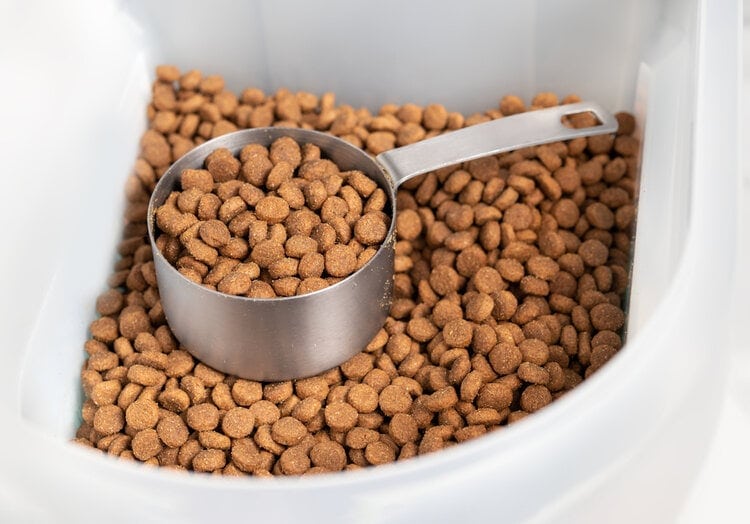
6. Free Feeding Is Considered a Common Cause of Obesity
Free feeding means leaving food down for your cat to eat throughout the day and whenever they want. Some cats are good at eating gradually over the day, and some owners are good at measuring the right amount of food out in the morning and sticking to it. But, if your cat eats all of their food by lunch, can you leave an empty bowl for the rest of the day?
The problem with free feeding is that it tends to lead to overfeeding, and it is often cited as one of the main causes of obesity in pet cats. Cats do well when given two or three meals a day, with their daily food allowance split over those meals.
Feeding your cat a high-quality diet is important for keeping them healthy and happy. But it goes beyond the food you choose; the dishes they use also matter. The Hepper NomNom Cat Bowl is our favorite for its unique, five-star design that protects from whisker fatigue and promotes good posture which also aids in better digestion. As an added bonus, it’s beautifully crafted and offers a modern take on the traditional cat bowl that fits seamlessly with all home stylings. Learn more about the NomNom by clicking here. At Catster, we’ve admired Hepper for many years and decided to take a controlling ownership interest so that we could benefit from the outstanding designs of this cool cat company!
7. Cats Should Get a Minimum 30 Minutes of Exercise a Day
As well as diet, exercise, or lack of it, is another major contributing factor to corpulence in cats. This is especially a problem for indoor cats. Cats that are allowed time outdoors will naturally get more exercise, especially if they enjoy running and playing outdoors.
If your cat is an indoor cat, you will need to ensure that it gets enough exercise. Experts recommend that domestic cats get approximately 30 minutes of exercise every day. Grab a wand toy and engage with your feline friend. Or teach them to play fetch and throw a stuffed mouse or small ball across the room. Devise games that will have your cat running and expending calories during the day.
If your cat takes to it, you can get an exercise wheel that enables them to burn off calories whether you’re at home or not.
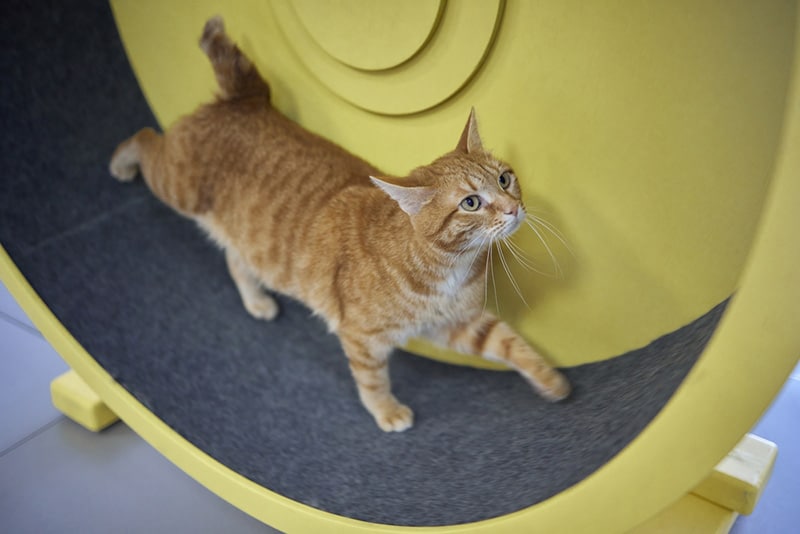
8. A 10 Pound Cat Burns Around 200 Calories a Day
To keep a cat at its ideal weight, it needs to burn as many calories as it consumes during the day. The number of calories your cat burns a day depends on its activity levels, primarily, with an average indoor cat expending around 200 calories a day4. If your cat is active and you’re offering 30 minutes or more exercise per day, they might be burning more calories than this.
If your cat is overweight and needs to lose a few pounds, it will need to burn more calories than it consumes, which means increasing exercise to burn more or reducing food to consume fewer calories. You will probably need to combine both these methods to help ensure the cat still has a healthy diet that includes essential vitamins and minerals.
9. Obese Cats Are More Prone to Diabetes, Cancer, and Other Conditions
According to Veterinary Partners, obesity causes extra strain and pressure on the organs of the body. It places pressure on the lungs, heart, liver, kidneys, and virtually every other important organ. And because the organs have to work harder, they are more prone to problems.
The extra fat distribution also increases insulin resistance, which can lead to diabetes. Carrying extra weight also means your cat will be short of breath even after minimal exercise which puts pressure on the lungs and the heart.
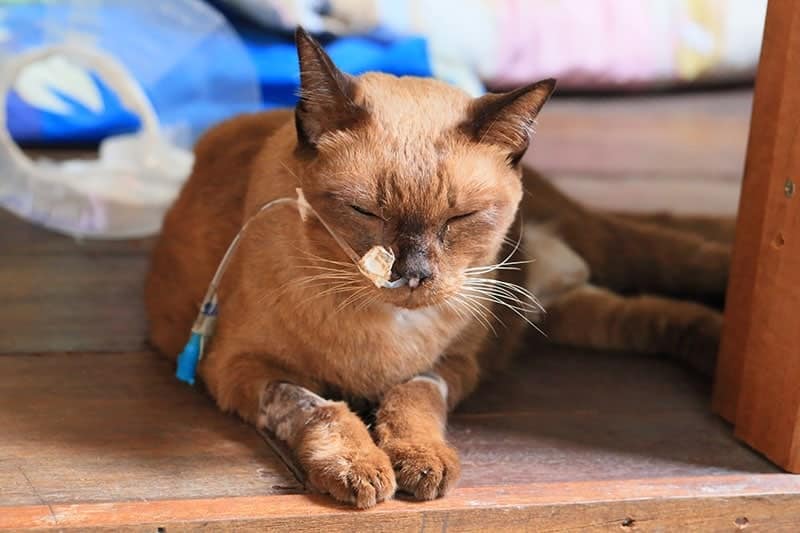
10. Overweight Cats Are More Likely to Suffer From Arthritis
As well as putting pressure on the major organs of the body, obesity also means carrying extra weight, and this means additional pressure on joints like the knees and hips. As stated by Veterinary Partners, that extra pressure can lead to arthritis, which is uncomfortable, painful, and potentially debilitating5.
And, once a cat has arthritis, it can’t be cured. Its progression can be slowed, and the signs treated, typically through lifestyle changes and potentially with regular medication, but once your cat develops arthritis, it will suffer some ill effects for the rest of its life.
How to Help Your Overweight Cat Lose Weight
There are really only two methods to help cats lose weight: increase daily exercise and reduce daily calorie intake. However, you may want to visit the vet before doing either of these, especially if your cat is very overweight or might struggle with increased exercise.
- Visit the Vet – Take your cat to the vet. They will be able to advise whether your cat is overweight or obese. They will also be able to advise a healthy diet and exercise plan. This is especially important if your cat is very overweight because sudden changes in diet or exercise levels could cause additional health problems.
- Increase Exercise – Cats should be given at least 30 minutes of exercise per day, but more is better. You can encourage exercise using toys, or even invest in a cat wheel. Alternatively, you can put a harness and leash on and walk your cat in quiet areas, away from local dog haunts.
- Diet – When reducing your cat’s daily diet, you will need to ensure that you still meet their daily protein, vitamin, and mineral intake. It can be a good idea to opt for a light or diet food because these contain less fat and fewer calories while still offering a complete meal. High-fiber diets can help cats who are still hungry after eating a suitable daily intake because fiber means they feel fuller.
Conclusion
Cats, like people, are more prone to a host of illnesses and conditions if they are overweight or obese. Obesity is common in domestic cats, especially in those that are free-fed, but while it can be challenging, it is possible to overcome weight problems in pet cats, through a combination of increased exercise and reduced diet.
Visit your vet before embarking on any particularly challenging dietary or exercise changes.
See Also:
Featured Image Credit: Benoit Daoust, Shutterstock
Contents
- The 10 Facts About Feline Obesity
- 1. It’s Difficult to Determine Ideal Body Weight
- 2. Cats Are Overweight When They Are 10%–20% Over Their Ideal Weight
- 3. Cats Are Obese When 20% Over Their Ideal Weight
- 4. Obese Cats Are Nearly Three Times More Likely to Die Early
- 5. An Extra 10 Pieces of Dry Kibble Per Day Can Cause a 1 Pound Weight Gain in a Year
- 6. Free Feeding Is Considered a Common Cause of Obesity
- 7. Cats Should Get a Minimum 30 Minutes of Exercise a Day
- 8. A 10 Pound Cat Burns Around 200 Calories a Day
- 9. Obese Cats Are More Prone to Diabetes, Cancer, and Other Conditions
- 10. Overweight Cats Are More Likely to Suffer From Arthritis
- How to Help Your Overweight Cat Lose Weight
- Conclusion

